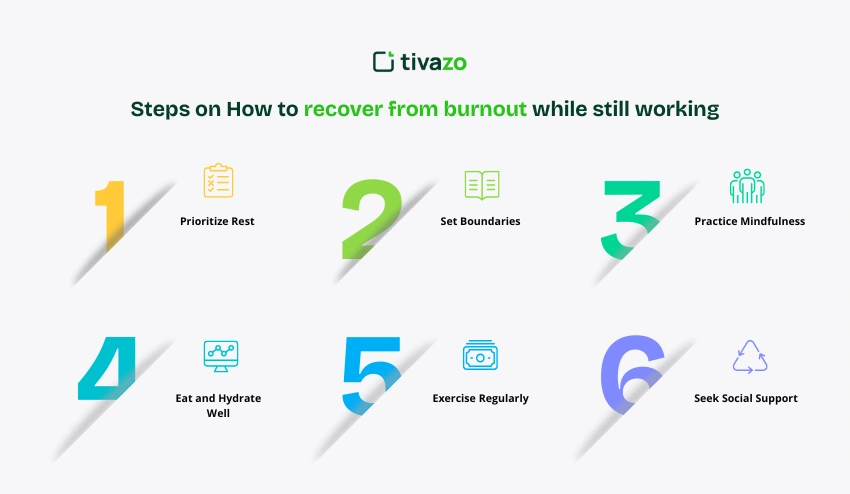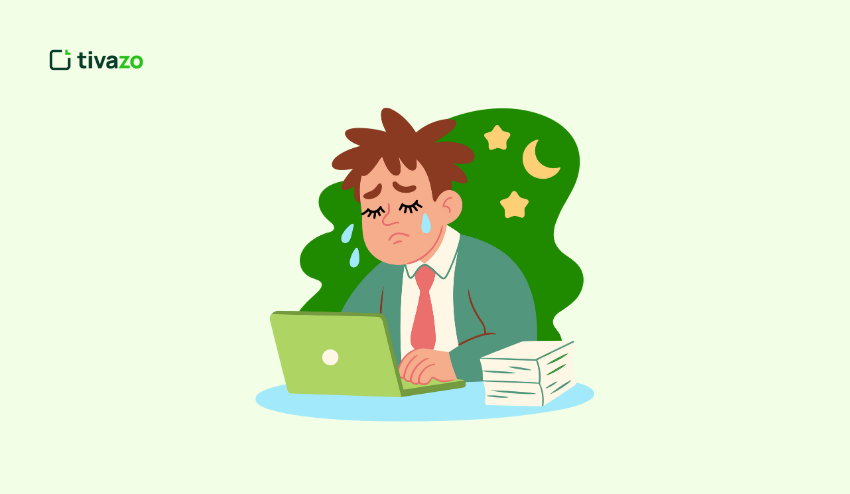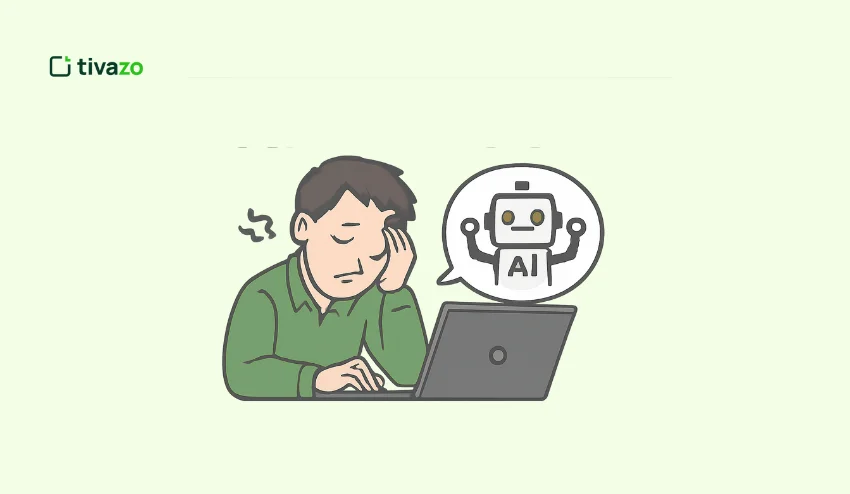Exhausted, demotivated, and emotionally drained? You’re not alone. Burnout may creep upon anybody, and both mind and body will be screaming in agony.
The positive fact is, there is a way of recovery. The best way of learning how to overcome burnout is to be able to notice the symptoms of burnout, perform self-care habits, and learn to cope with stress by using various methods to reconnect your energy and interest in your job.
Burnout is not only a state of fatigue; it is long-term stress, emotional exhaustion, and a broken work-life balance in most cases. With the help of easy tricks such as mindfulness, relaxation practices, and restoration of healthy habits, you will be able to overcome burnout, avoid future occurrences, and be mentally clear. Regardless of whether you need to deal with exhaustion and cope with burnout at your workplace or design your self-care routine, these steps will help you get better, feel revitalized, and recover your emotional state.
👉Related: 10 Burnout Indicators You Shouldn’t Ignore | 2026
What is Burnout?
Burnout is a state of chronic physical, emotional, and mental exhaustion caused by prolonged stress, often related to work, caregiving, or personal pressures. It goes beyond simple fatigue; people experiencing burnout may feel overwhelmed, unmotivated, and disconnected from their usual responsibilities.
10 Simple Steps on How to recover from burnout while still working
Recovering from burnout doesn’t have to feel overwhelming. These 10 simple steps will guide you on how to recover from burnout effectively while restoring your energy and emotional balance.

1. Prioritize Rest
The basis of the burnout recovery is rest. Burnout is all about chronic fatigue and mental depletion, that one from clearly thinking and acting effectively. The first step in learning how to recover from burnout is accepting the fact that your body and mind require intentional rest to rejuvenate.
Sleep is very important in the restoration of energy and mood regulation. A goal of 7-9 hours of good sleep every night and short breaks throughout the day to avoid overworking. The National Sleep Foundation argues that when one lacks rest, stress, irritability, and cognitive decline increase, which aggravate the symptoms of burnout.
Besides sleep, other activities such as reading, listening to music, or silent meditation can also be a way of refilling your emotional batteries. With a focus on rest, you provide your nervous system with an opportunity to relax, alleviate chronic stress, and position yourself to be productive over the long term. Rest is not laziness; it is also a strategic component of the recovery process of burnout.
2. Set Boundaries
Setting boundaries is very important in guarding your energy. When you are forced to answer and say yes to all things, it consumes your resources and leads to emotional exhaustion. Learning to overcome burnout includes the establishment of boundaries on work, social, and even online connections.
Clear boundaries imply the establishment of work schedules, the unwarranted overtime, and the refusal to accept the tasks that do not correspond to your expectations. Sharing these limits with your colleagues and people who love you will keep them aware of your time and alleviate stress. A study conducted by the American Psychological Association reveals the importance of establishing personal boundaries in minimizing the risk of burnout.
Powerful boundaries bring about a feeling of control and balance in life, over a period of time. In the act of saying no, you defend your psychological and emotional mind, body, and soul. Not only is rest involved in learning how to recover from burnout, but a healthy environment that enables your long-term health and productivity is also included.
3. Practice Mindfulness
Mindfulness can be an effective stress coping method and emotional exhaustion. One of the main steps in the process of how to recover from burnout is the incorporation of meditation, deep breathing, or mindful walking, since it will activate the relaxation response of the body. This helps lower the generation of stress hormones such as cortisol, which are commonly high in burnout of chronic burnout.
Constant mindfulness allows raising the level of concentration, emotional stability, and strength. Five or ten minutes a day is enough to make a significant difference in anxiety and mental fatigue. A 2020 study in Mindfulness notes that mindfulness interventions can substantially reduce emotional exhaustion and improve overall well-being.
Moreover, mindfulness fosters self-knowledge, which allows you to identify burnout triggers early enough before they develop. This can be achieved by learning to stop and watch what you are thinking so that you can respond to stress more mindfully than reacting to it. Being mindful is one of the key elements of the process of overcoming burnout without losing emotional stability.
4. Eat and Hydrate Well
The amount of nutrition you have directly impacts the amount of energy and brain activity. Consuming high-profile meals and remaining hydrated are necessary in understanding how to overcome burnout since inadequate nutrition may aggravate exhaustion, irritation, and concentration problems. Proteins, healthy fats, and complex carbs in balanced meals have the effect of stabilizing mood and enhancing mental clarity.
Hydration is also significant; dehydration may cause fatigue, headaches, and lack of concentration, which increase the impact of burnout. Drinking enough water during the day maintains the body in optimal operation and helps in recovery. HapHeard claims that hydration influences not only the level of cognitive functioning but also emotional regulation.
Energy crashes and mood swings can be avoided by avoiding excessive use of caffeine, sugar, and processed food. Drastic changes can be made to enhance resilience on a small scale through adding more vegetables, whole grains, and lean protein sources. A common yet highly useful way of recovering the patient after burnout is to eat and drink well.
👉You May Also Like: Mental Fatigue in 2025: Symptoms, Types, and Effective Ways to Overcome It at Work
5. Exercise Regularly
Exercise is an automatic stress reliever as it helps the mind and body. Frequent exercises help in the release of endorphins, which are known to uplift the mood and alleviate anxiety, which are vital components in learning to overcome burnout. Even such low-impact activities as walking, yoga, or stretching can have a significant impact.
Exercise also enhances the quality of sleep, raises the energy level, and boosts the immune system. The Mayo Clinic points out that exercise is a good way to minimize depressive and fatigue symptoms, both of which are prevalent in burnout. These are long-lasting benefits that will be achieved by developing a regular workout regimen.
Moreover, physical activity helps to take some mental rest after hectic schedules, to get some sanity and insight. You enhance the effects of recovery by practicing mindfulness or by being outside and exercising. One of the most effective ways to recover after burnout and in the long-term health is to include exercise in everyday life.
6. Seek Social Support
It is essential to connect with people to heal them emotionally. Isolation usually exacerbates burnout, and it becomes more difficult to process stress and continue to be motivated. The way of learning to overcome burnout incorporates finding comfort among friends, family, workmates, or support groups to share their experiences and gain insights.
Structured strategies that help to deal with stress and stop the relapse can be offered by professional support, including therapy or counseling. The viewpoint of the American Psychological Association suggests that social support serves as a protective factor with respect to emotional exhaustion and mental health deterioration.
Outside of any formal assistance, informal talks, social get-togethers, or even web forums can help alleviate the feeling of loneliness and offer motivation. Forming a network of support is critical in the recovery process of burnout since it boosts resilience and emotional health.
7. Reconnect with Hobbies
Due to burnout, you can usually lose interest in something you used to enjoy doing. One of the most effective methods on how to recover the burnout is to rediscover hobbies, which will reintroduce pleasure and rest. Creative or recreational activities will regain the feeling of purpose and personal satisfaction.
Hobbies offer a person a mental diversion from stressors and give your brain a diversion of something new and enjoyable. Creativity and anxiety are enhanced by activities such as painting, gardening, music, or learning new skills. Psychology Today states that doing pleasant activities improves the dopamine level, which helps in recovering a mood.
Further, hobbies assist in restoring identity and personal satisfaction beyond the work field or caregiving nature. You build emotional resilience by giving priority to things that bring you joy and enhancing the burnout recovery process.
8. Reflect on Priorities
The time to look back enables you to rectify your life on its right path. One of the ways of recuperating the burnout is through identifying the stressors and either dropping or delegating the tasks that take away your energy. Reflection assists in making a clear picture of personal values, long-term perspectives, and realities.
Evaluations of commitments allow making more intelligent decisions and avoiding burnout in the future. A balanced working load, work duties, and personal expectations will diminish the feeling of being overwhelmed and will establish a sustainable life rhythm. Forbes states that individuals who assess priorities on a regular basis will have less stress and be more productive.
Self-awareness is also developed through reflection, and it alerts you to the warning signs sooner. You gain strength and support the process of how to recover from burnout by setting realistic objectives and emphasizing purposeful activities.
9. Limit Digital Overload
Too much time on the screen and frequent notifications are the sources of mental exhaustion and burnout. The skills on how to overcome burnout involve lessening unnecessary digital interaction, establishing gadget-free hours, and restraining the use of social networks. The practice clears the mind and enhances concentration.
Digital detox may help to sleep better, feel less anxious, and become more mindful. A research study carried out in Computers in Human Behavior has shown that stress and emotional exhaustion are largely reduced by limiting screen exposure. The integration of technology limits is essential to psychological healing and psychological health.
Having turned off half of your digital devices deliberately is a way to get your mind to rest, to get back to clarity, and to shift the focus to more restorative pursuits. Taking charge of your online life is a new and productive measure in learning how to overcome burnout.
10. Consider Professional Help
It is true that professional direction is the quickest road to recovery at times. It can be learned how to overcome burnout by seeking the help of a therapist, counselor, or a coach, and working out individual coping mechanisms and emotional support. Professionals may assist you in solving issues underlying stress and equipping you with lasting survival measures.
Severe burnout, depression, or anxiety are particularly good targets of professional intervention. The World Health Organization states that accessing mental health care is a highly effective way of enhancing the recovery process and avoiding a relapse.
The collaboration with a professional presents an opportunity to control progress, make it measurable, and safe. The approach to recovery after burnout with a combination of therapy and lifestyle changes is the absolute way to go to enable you to regain energy, concentration, and emotional stability.
Using these 10 steps in a steady and conscious manner, you will be able to reconstruct your energy, focus again, and be emotionally balanced. The art of burnout recovery is something that is safe to learn over time and must be purposely practiced.
How long does it take to recover from a burnout?
Burnout recovery time is different with respect to the severity, personal factors, and methods of cure. There is no standardized method of overcoming burnout, and in some cases, it may be evident after some weeks of sufficient rest, stress management, and self-care practices, whereas in other cases, one may need months before restoration of energy levels and mental acuity. The American Psychological Association explains that emotional exhaustion and work-life imbalance are two important factors that should be tackled in order to achieve long-term recovery.
Mindfulness exercises, physical workouts, nutritious diets, and social support are LSI strategies that can be adopted to help the healing process go faster. It is necessary to note that burnout can not only impact the psyche but the body as well, as lifelong symptoms of chronic stress, such as fatigue, irritability, and lack of motivation, may persist unless the change in lifestyle is maintained. With constant use of techniques to regain concentration, deal with stress, and take care of your emotions, you will be able to slowly revitalize your strength and performance and avoid further burnout.

What happens if you ignore burnout?
Burnout should not be ignored because its effects on mental and physical health may be severe and prolonged. Emotional exhaustion may be worsened as soon as you do not deal with chronic stress and exhaustion, which results in cynicism, detachment, and demotivation. Recovery after burnout is much harder to learn when the symptoms are not controlled because stress over the long-term period influences decision-making, creativity, and the productivity level in general.
Physiologically, untreated burnout may lead to sleeping problems, frequent headaches, gastrointestinal problems, and a depressed immune system. One of the main aspects of burnout is chronic stress, according to the Mayo Clinic, which has been associated with such health problems as heart disease, high blood pressure, and other severe health conditions. The more burnout is neglected, the more such risks will be stored, and the process of recovery will be more difficult.
Mentally, burnout may be ignored, resulting in anxiety, depression, and burnout-associated depression that complicates the recovery further. Irrability, withdrawal, or lack of empathy may damage relationships at both home and work, resulting in stress and frustration that leads to more stress and frustration, causing a vicious cycle. Being able to identify and actively learn the art of bouncing back when you experience burnout, you can also avoid such dire consequences and preserve both your emotional and physical health before the situation gets out of hand.
Conclusion
The process of burnout recovery is both a process that needs awareness and conscious effort, and self-care. With a caring awareness of the symptoms of emotional and physical burnout, you will be able to revive your energy, attention, and mood gradually, through incorporating the following practical measures: making rest a priority, establishing limits, being mindful, and finding a support system. Being proactive in overcoming burnout will not only aid in the recovery process but also help avoid long-term health issues and stress, and save your productivity and relationships.
Keep in mind that the process of learning how to cope with burnout should focus on establishing long-term habits, returning to what makes you happy, and establishing balance in your life. Are you willing to make the first step in reclaiming your energy and vitality today?




